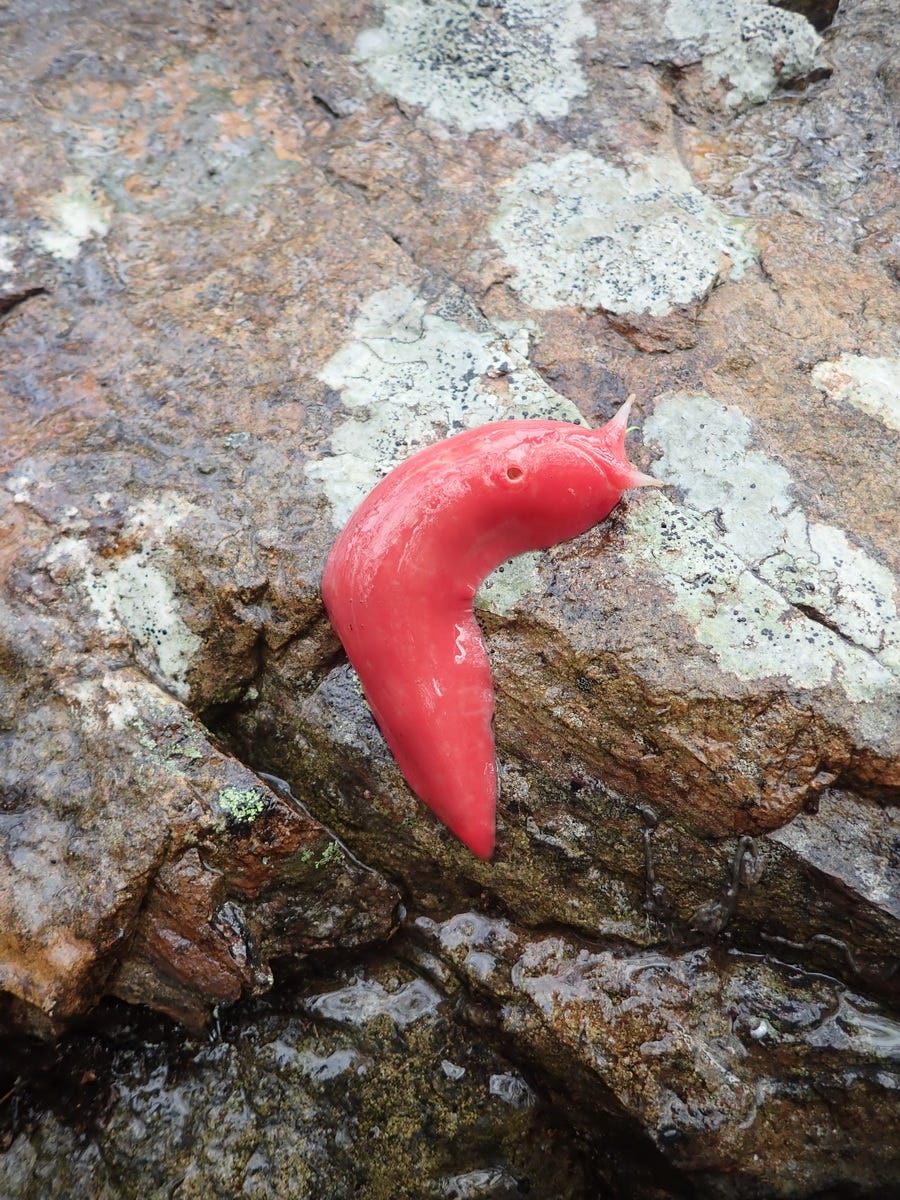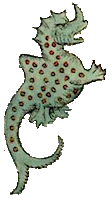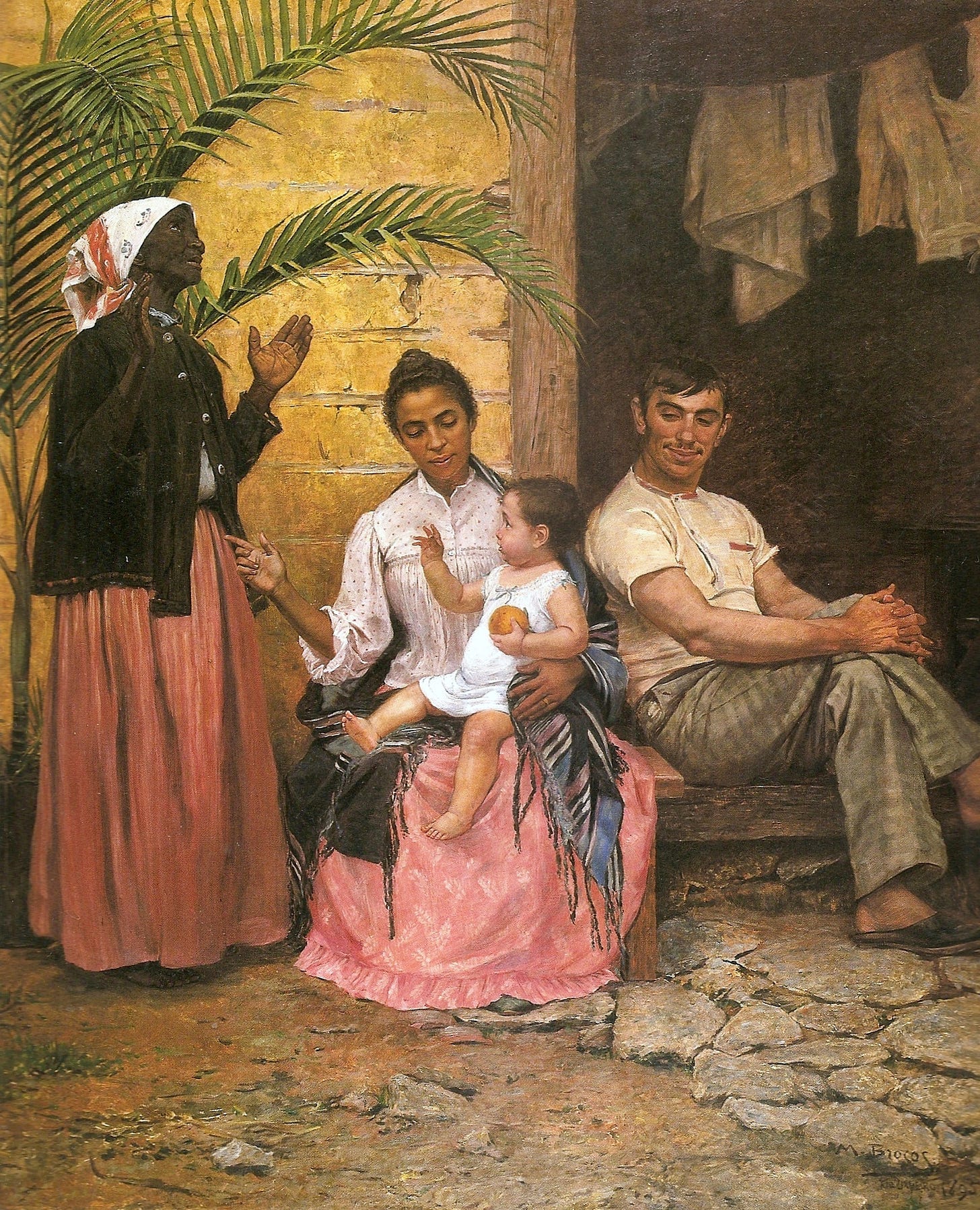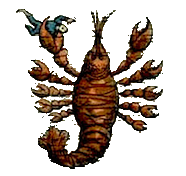In the family of someone I know I witnessed a hereditary curse.
In this family there was a lineage of four women, belonging to four generations, aged about 95, 65, 35, and 5. Now there are only three. The eldest died a few days ago, after many years of living with dementia. The dementia and cardiovascular accident that killed her are not — we hope — part of the curse, but they sure make it easy to imagine that something sinister is going on.
Some years ago, the 35-year-old struggled with pretty severe mental illness — some kind of mix of depression, psychosis, maybe something something schizophrenia. She recovered, but now her mother, the 65-year-old, has something very similar. She is in the hospital now after an episode that may be interpreted as a suicide attempt. It’s not the first time that this happens: she had a similar episode of mental issues a decade and a half ago, and possibly one in her teenage years as well. The current situation has understandably stressed out the 35-year-old, who is now entering a relapse of her previous problems.
It is unknown whether the 95-year-old had similar mental illness during her lifetime, but it wouldn’t surprise anyone. We know that her mother died from suicide. And that across the generations, one of the ways of dealing with a loved one’s mental crises has been to use physical violence.
I look at the 5-year-old and I just hope she manages to escape the curse somehow.
Curses aren’t real, of course, in their supernatural sense at least. You can’t actually put a hex on someone and all of their descendants as a way to punish them.1
Curses aren’t real, but heredity is. Bad patterns of information can be inherited through several mechanisms. One is genetics, which can pass on any mutations that have some kind of negative effect, as long as they don’t jeopardize survival and reproduction. Genes don’t care if they give you bipolar disorder, as long as you have kids, and to the extent that the bipolar disorder is caused by genes, your kids will receive the Curse of Higher Chance of Bipolar Disorder as well, and then pass it on to their kids.
Another mechanism is culture. Culture encompasses many things, some of which aren’t typically hereditary, but some of them are definitely passed down vertically from one generation to the next: language, religious beliefs, values, customs, and a myriad of small quirks that run across families and makes them their own little subcultures, subtly distinct from all other families. Some of those quirks can be horrible values. It is generally agreed that beating up your kids increases the chances that they in turn will beat up their kids. Though it may be somewhat easier, in theory, to escape cultural problems than genetic disorders, curses such as the Curse of Domestic Abuse can very well persist for a long time.
I sometimes wonder if the supernatural concept of family curses was invented by early humans precisely as a way to make sense of those patterns that are clearly bad and yet live on. Just like, very speculatively, polytheistic gods may have been a way to make sense of complex, emergent, apparently agentic phenomena. Or the concept of magical formulas may be a way to grasp the very real power that we embed within words.
It’s not really a creature, but I wonder if hereditary curses belong as an entry in the psychofauna bestiary.
Stereotypically, curses in fantasy land are pretty difficult to get rid of. Otherwise they’d be temporary annoyances, not curses. At best, you’ll have to visit your local shaman/wizard/priest and get him to perform a bunch of elaborate rituals. At worst, you’re out of luck, and the curse is going to plague your lineage until the end of times.
Real-life hereditary curses are also difficult to break. We cannot edit our genes, so the only place we can act is before conception. Some people do genetic screening before having kids or getting married, to ensure compatibility. Recent techniques to select embryos give us an additional curse-avoiding tool. But more fundamentally, the existence of sex itself is most likely an attempt by evolution to minimize the problem of genetic curses.
Sex has always been something of an evolutionary puzzle. From the point of view of a gene — which is all that ultimately drives evolution, rather than individuals or species — it’s better if its carrier reproduces asexually. The resulting clone carries all the genes of its parent, whereas sexual reproduction requires half the genes to “sacrifice” themselves, since they’ll be replaced in the progeny by genes from the other parent. Yet at some point in the evolution of complex life, natural selection chose sexual reproduction as the dominant strategy for most things that aren’t bacteria. And even bacteria have various mechanisms, like horizontal gene transfer, to recombine their genetic material.
The answer has to be that genetic diversity is good somehow. Genes that are so “selfish” they only try to reproduce with 100% fidelity eventually lose to genes that “accept” to be passed down only some of the time. This is in large part because it allows errors to be fixed.
If a mutation randomly happens in a gene and causes the Curse of Being Bright Pink and Very Conspicuous to Predators, the other genes in the organism want that gene to be replaced by a better version in the next generation. Otherwise the lineage risks becoming extinct very quickly.

Of course, sexual reproduction is only a partial antidote to curses, and only a long-term one. It gets less efficient if people reproduce among family members. That’s what we call inbreeding. Most cultures have taboos against incest that probably evolved as a way to avoid curses. Sometimes inbreeding still happens, for example if you’re the head of a large ruling house of imperial Europe and are very concerned about keeping power within the family, and you eventually get various genetic defects like the Curse of the Habsburg Jaw:
and:

Once a curse is known to exist, there isn’t much you can do, except plan ahead on the scale of generations. That does happen deliberately sometimes. In researching images to illustrate genetic curses, I came upon this fascinating painting from 1895 Brazil:
In the Bible, Ham is cursed by his father Noah, which somehow (I don’t understand the details) got associated with black people, justifying things like racism and slavery. The painting above shows “Ham’s redemption,” the breaking of the curse: the progressive whitening of black Brazilians through interracial marriage over three generations. A real-life example of a genetic “curse” being slowly lifted over time.
Yes, it’s incredibly racist, and this leads us to the next point: most ways of deliberately engineering solutions to genetic curses, today, are at best frowned upon and at worst strongly condemned as eugenicist. Genetic screening before conception, as done by Ashkenazi Jews and other groups, is okay; embryo selection is controversial; encouraging people with “good genes” to reproduce, and those with “bad genes” to avoid it, is deeply wrong.
It might be for the best, since we’re not that great at deciding what is a curse and what isn’t. For a long time it made sense to Europeans to consider blackness as a curse. If we went full speed ahead with eugenics, we might similarly make tragic mistakes. Not to mention that over-optimizing for “good genes” could reduce genetic diversity, which is exactly the right way to make curses worse.
Fortunately, we’re doing pretty good at genetic diversity in general. Few populations of humans are isolated. Incest and cousin marriage are almost universally frowned upon. Interracial unions have become common, and there’s a lot of immigration and intermixing all over the place. Though that won’t break any specific curses, it might keep most at bay.
Diversity also happens to be the remedy for curses due to cultural heredity. A person living in a very insular community can easily get screwed up by some harmful memes that are passed along by their family. But contact with wider society, and therefore a much broader range of opinions and beliefs, can allow them to realize the danger and dispel the curse.
It helps that cultural curses are generally easier to fix than genetic ones. At least, provided that the curse isn’t so widespread in global culture that there’s no way to avoid it. A major feature of the modern age is that there aren’t that many insular communities anymore. Everyone buys into the same broadly Western values, to a point. If there’s a curse in those, it’ll be very hard to detect.
But in that case, we’re not really talking about family curses anymore — we’re talking about curses of the human condition. We might be able to break some of those, just like we broke the Curse of Thinking Slavery Is Morally Okay. That is, however, a much bigger project.
From what I gather, modern psychiatry doesn’t really understand most mental illnesses. There often seems to be a genetic component. There probably are hereditary cultural factors, too, at several scales: family, society, and everything in between. Some suspect that depression is a Western-specific ailment, not actually present in other cultures. There’s also the disquieting hypothesis that those illnesses could be extreme manifestations of something that causes more creativity, more diversity — and so, just like sexual reproduction, they might paradoxically be a good thing over time.
I don’t know, nobody knows, but it sure doesn’t seem worth it that so many people suffer from them just because they were born into a cursed lineage. We need to figure it out. We need to break those curses forever. We need to make sure that the 5 year-old girl escapes, and likewise for everyone else.
Citation needed












Fascinating topic! Two thoughts: 1) A Hundred Years of Solitude acts out exactly what you're describing here. 2) I think my mother's family has a bit of a 'curse' on it. What's alarming too is that it often affects only or especially the women. Most visibly? (In this case, the men are functional human beings with families of their own.) As the next woman in line, I try not to worry about it... too much.
Excellent reflections. It's not your main point, obviously, but I just wanted to say I've seen the Kaputar pink slug, in large numbers, at Mt Kaputar, New South Wales in spring, as the sun emerged after bitterly cold rain and wind. Even people who live there may go their whole lives without seeing the slug, so we feel lucky to have seen this bizarre creature.